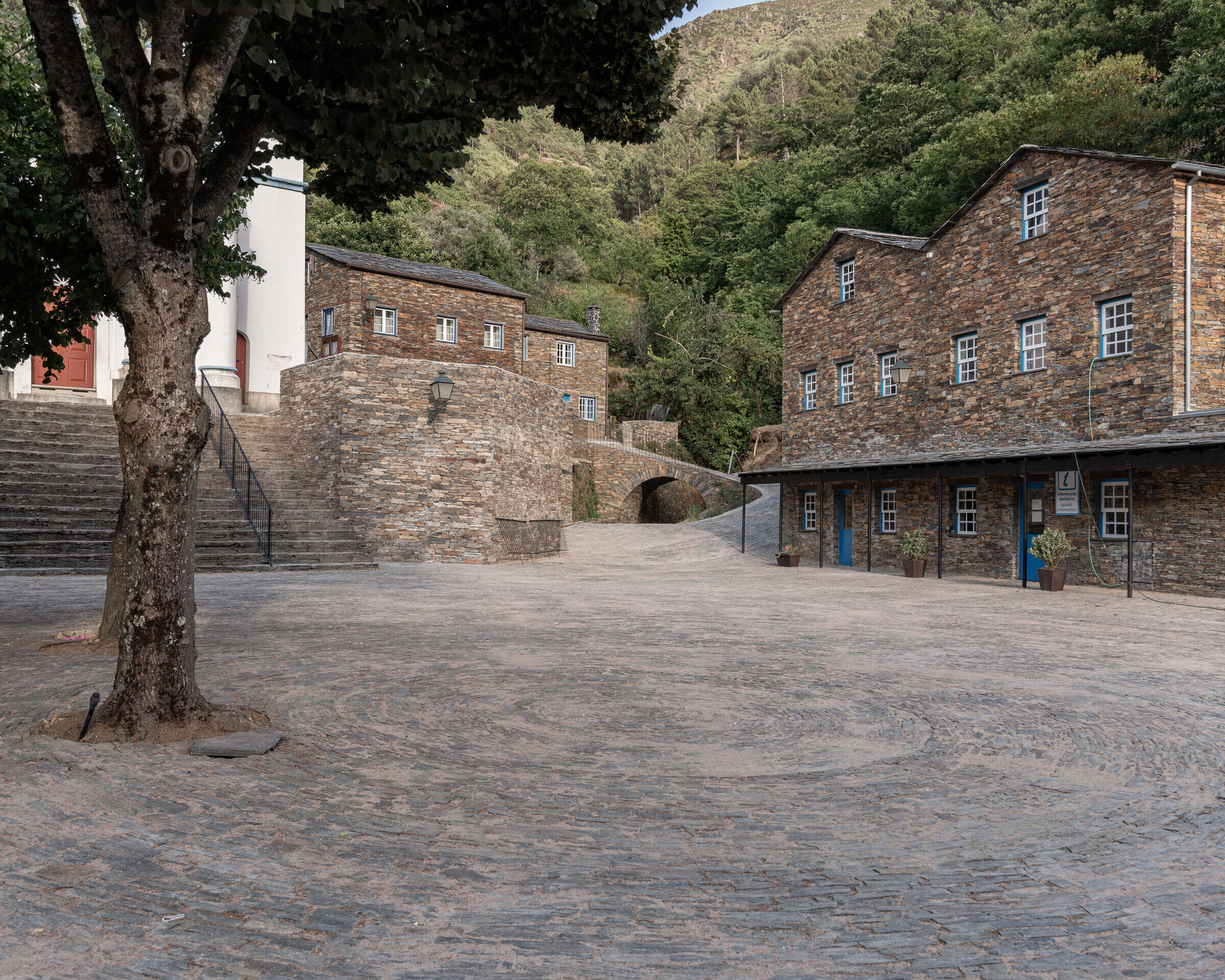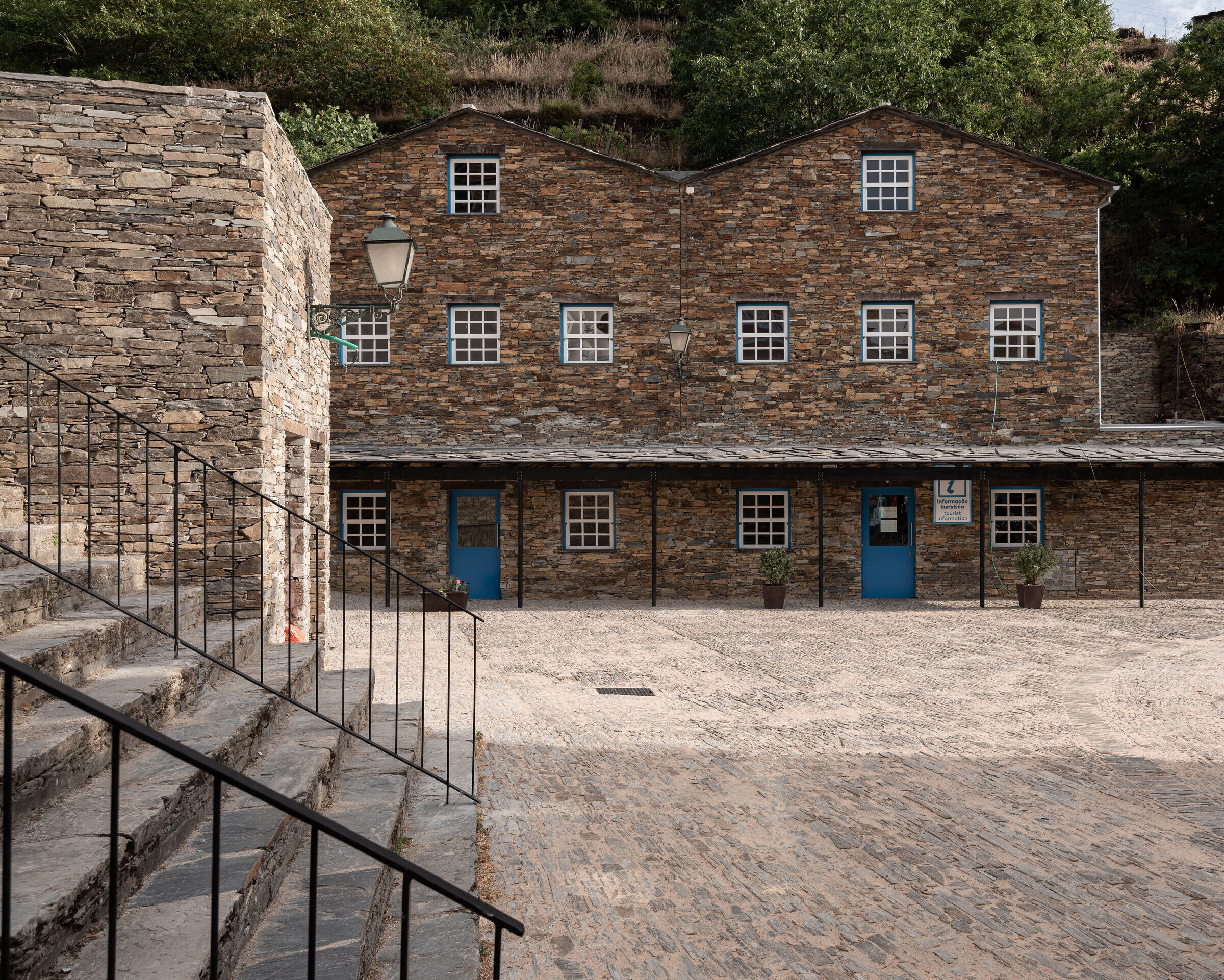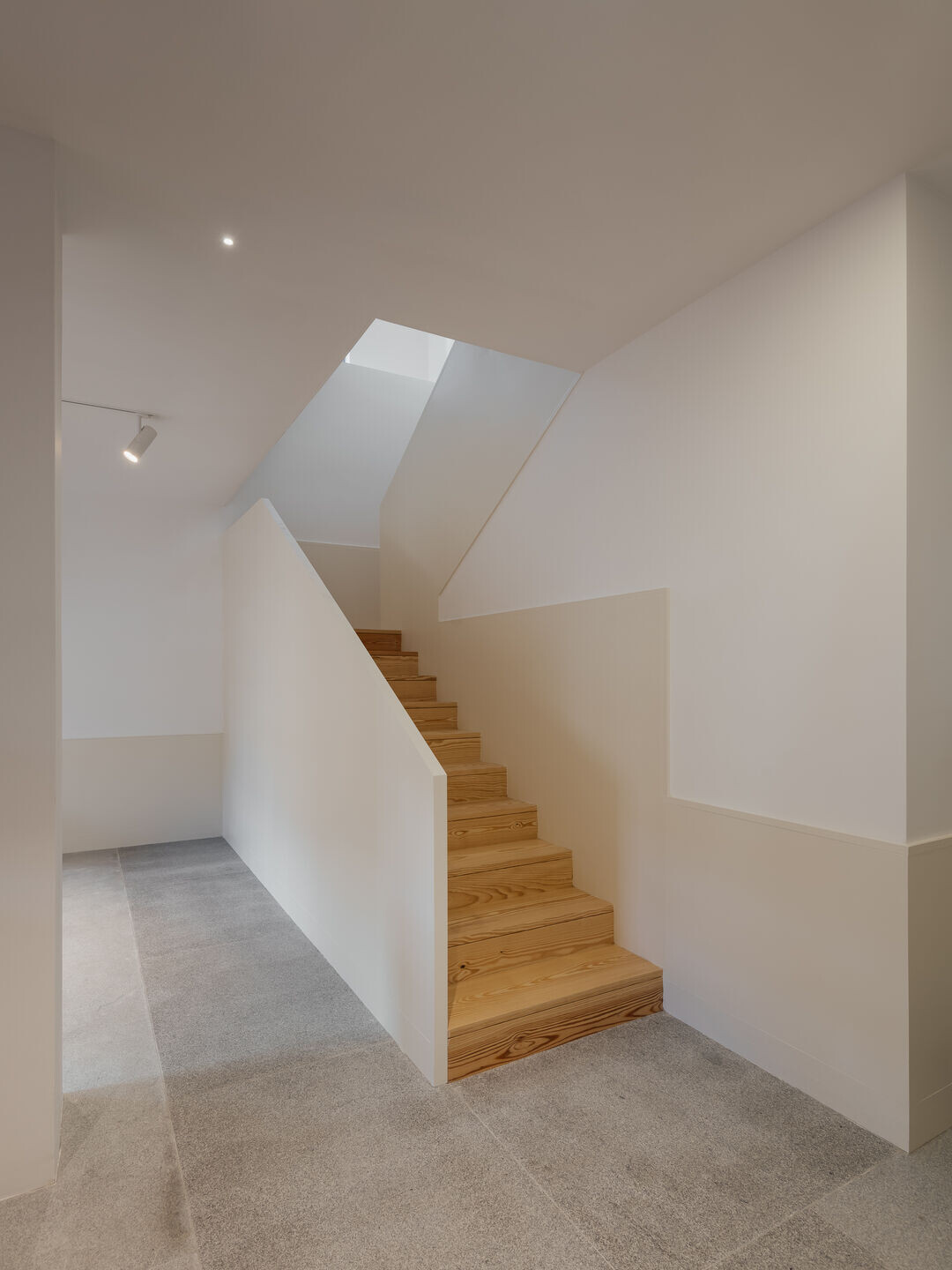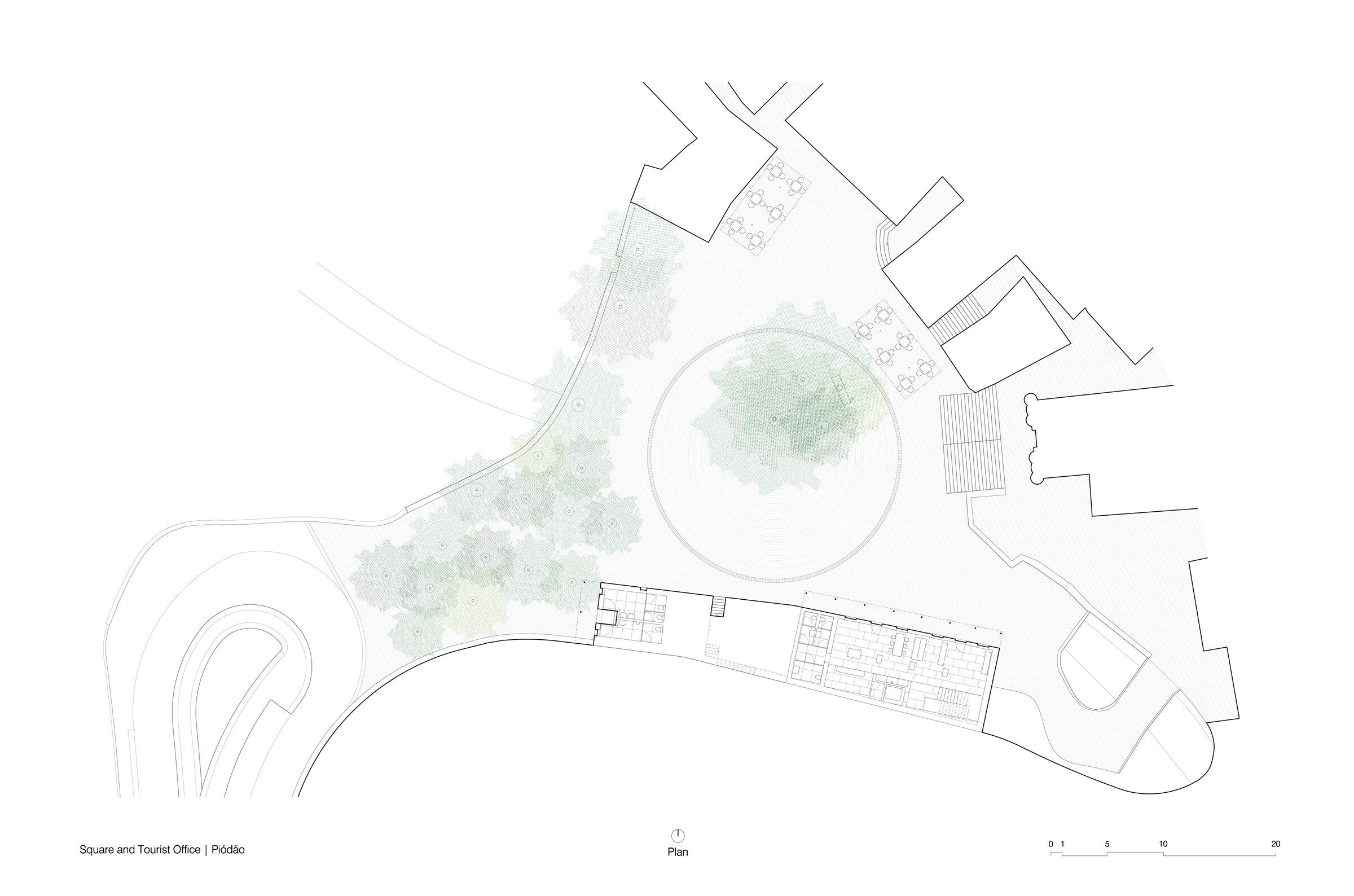The village of Piódão is located in the Serra do Açor, central Portugal. Its schist houses traversed by steep and narrow streets form of an amphitheatre on a northwest-facing escarpment.

In its lower part, the Cónego Manuel Fernandes Nogueira square is the only open, flat and unobstructed space and serves as the main access to the village.

Therefore, over the years, the space has been occupied by cars as a parking lot. The project returns the space to the pedestrian as the gathering spot of the village, favoring exchange and social interaction.

Firstly, a grid of cherry trees, at the entrance, changes the sequence of arrival. After the first discovery of the village, made by car, in the distance, in which its landscape settlement is recognized, the trees postpone the second order of understanding of the whole: the appearance of the elevation of the village from its base. This vegetal filter also protects and withdraws the square from the road, preventing the passage of cars.

Secondly, the new pavement of the square built in schist without unevenness or curbs, reinforces the new pedestrian character, and ensures universal accessibility. The formal complexity of the space, which lacks directionality, is approached with the introduction of a large central circle, at the axis of the church, which circumscribes the bust and the existing trees.

The different elements that make up the square: the church facade and the stone foundation on which it lands, the tourist office and the small houses with restaurants and cafes are arranged around this new soft centrality.

The project also includes the tourist office building, located on the south side of the square. The intervention, both inside and outside, aimed at cleaning and clarifying the existing building,removing eliminating elements and additions. A new shade, built on the traditional system of wooden structure and slate slabs, protects the entrances to the building and contributes to a unitary image of the whole.

















































